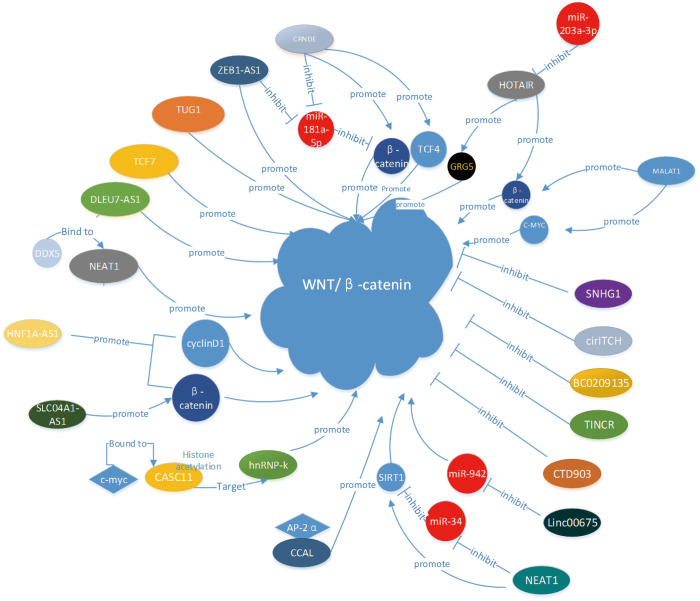Figure 1.
LncRNAs affect Wnt/β catenin pathway in CRC cells. c-Myc bound to CASC11 and increased promoter histone acetylation to enhance CASC11 expression, then CASC11 target heterogeneous ribonucleoprotein K (hnRNP-K) to activate Wnt/β-catenin signaling pathway; CCAL targeted activator protein 2α (AP-2α), and activated Wnt/β-catenin pathway; NEAT1 promoted Wnt/β-catenin signaling pathway by sponging miR-34 to enhance SIRT1 expression; another study showed that DDX5 bound to NEAT1 to promote Wnt/β-catenin signaling pathway; Linc00675 suppresses miR-942 to promote the Wnt/β-catenin signaling; HNF1A-AS1 stimulated Wnt/β-catenin signaling pathway activity by upregulating the expression of β-catenin,cyclinD1; ZEB1-AS1 inhibits miR-181a-5p and provokes ZEB1 to promote Wnt/β-catenin signaling pathway; CRNDE inhibited miR-181a-5p and provokes β-catenin and TCF4 to promote Wnt/β-catenin signaling pathway; MALAT1nduced Wnt/β-catenin signaling pathway by promoting c-Myc and β-catenin; CTD903, TINCR, BC0209135, cirTCH, SNHG1 inhibited Wnt/β-catenin signaling; DLEU7-AS1, TCF7, TUG1 promoted Wnt/β-catenin signaling; miR-203a-3p downregulated HOTAIR, which increasing β-catenin and GRG5 to facilitate the Wnt/β-catenin signaling. LncRNAs, long non-coding RNAs.

